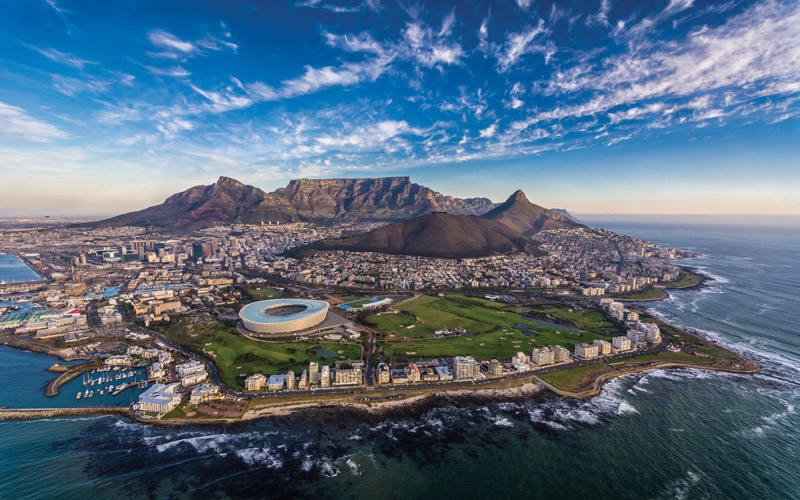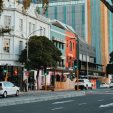South Africa’s most special café where 5 of 5 who’ve ...
Hydrogen Fuel Cell Laboratory opens in Cape Town
South Africa aims to increase its global market share in the production of hydrogen and fuel cell catalysts
Naledi Pandor, the Minister of Science and Technology, wants South Africa to achieve 25 percent of the global market in the production of hydrogen and fuel cell catalysts, using novel platinum group metal catalysts.
With platinum being a key component for most fuel cells, Pandor believes the country is well placed to do so, particularly as it has three quarters of the world’s platinum reserves.
Speaking at the official opening of a hydrogen fuel cell research laboratory in the Cape Town, Pandor said the country must compete with the UK and Korea, who were world leaders in hydrogen fuel research.
She said while Daimler, Hyundai, Honda and Toyota have all announced plans to have fuel-cell vehicles ready for the market by 2015, there were reports that the UK was planning to have hydrogen driven black cabs in time for the 2012 Olympics.
The UWC Competence Centre on Hydrogen Technology Validation and Systems Integration, University of the Western Cape (HySA Systems), which Pandor officially opened today, is part of the South African Institute for Advanced Materials Chemistry based at the University of the Western Cape.
The centre is one of three hydrogen fuel research institutes, or HySA centres, set up by the government following the approval of the National Hydrogen and Fuel Cell Technologies Research, Development and Innovation Strategy by Cabinet in May 2007.
Mintek and the University of Cape Town co-hosts the Hydrogen Catalysis Centre of Competence, while the Council for Scientific and Industrial Research (CSIR) and the North-West University co-host the Hydrogen Infrastructure Centre of Competence.
Pandor said the HySA centres were working towards developing capabilities in three main areas, namely in combined heat and power systems, portable power systems, and hydrogen fuelled vehicles – with human capital development as a cross-cutting focus.
Large amounts of project funding
The centres have developed strategic collaborations with academia and industry both locally and abroad, with leading players in hydrogen and fuel cell technologies in Germany, Norway and China.
Turning to the HySA Systems unit which she officially opened today, Pandor said her department had so far spent R59 million on baseline and project funding for the laboratory.
She heaped praise on the Director of HySA Systems and Norwegian expert, Dr Oystein Ulleberg, pointing out that since the appointment of Ulleberg in September 2008 the centre had developed in leaps and bounds.
“My department realised early on that South Africa, which entered the field rather late, will not be able to succeed on its own, and we therefore made it a contractual obligation for HySA to recruit internationally recognised experts like Dr Ulleberg in the field of hydrogen and fuel cell technologies,” said Pandor.
The large amount of project funding that the centre had won since its launch, R56 million, was indicative of the progress Ulleberg and his colleagues were making, she said.
“Last month we saw the fruits of HySA’s research efforts at the launch of Ahi Fambeni, a hydrogen-fuelled bicycle powered by HySA Systems’ innovative metal hydride storage technology. I am sure that many more innovative ideas will be coming to the fore,” she said.
The minister said she was particularly pleased to note that in just one year Ulleberg had been able to more than double the number of student research assistants, but she hoped however that he would soon be able to attract more women and black students to the laboratory.
Safe, and sustainable energy solutions for the future
She said her department was also running an awareness campaign through the South African Agency for Science and Technology Advancement, to publicise the message that hydrogen and fuel cell technologies are a clean, safe, and sustainable energy solution for the future.
The Hydrogen and Fuel Cell Technologies Public Awareness, Demonstration and Education Platform targets pupils and students, the general public, the private sector, key decision makers and entrepreneurs.
The objectives of the HySA Public Awareness is to spread the word about hydrogen and fuel cell technologies as clean, safe, and sustainable energy solutions for the future, as well as to facilitate the demonstration of such technologies through a visual programme.
Pandor said hydrogen and fuel cell technologies were part of the energy grand challenge, one of the department’s five “grand challenge” fields.
“Grand challenges are an important organizing principle for science, technology, and innovation policy. This is how the US organises its innovation strategy and how the EU is planning to organise its innovation strategy,” she said.
The launch of Hydrogen South Africa Infrastructure, attached to the University of the Western Cape, follows the release last week of the department’s National Survey of Research and Experimental Development report for 2008/2009, which revealed the country was still falling short of its target of spending one percent of gross development product (GDP) on research and development (R&D).
The report revealed the country’s spend on R&D dropped slightly from 0.93% of GDP to 0.92% of GDP last year.
Pandor said the country had an obligation to use science and technology to develop the country and assist South Africans and boost economic growth.
She said at the launch today that it was necessary for South Africa to also assist other African countries to develop their research capabilities, pointing out that South Africa would not advance if the continent itself remained failed to grow and develop.
Courtesy BuaNews
For your monthly update on what’s happening in and around Cape Town, make sure you subscribe to our popular Editor's Picks Newsletter.








